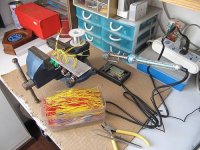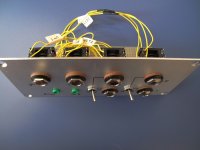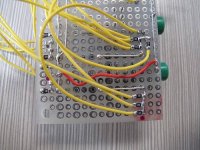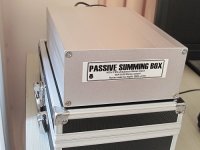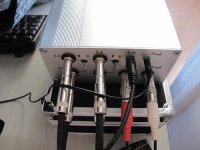I planned on doing some tests of my own. I was just going to use 4 Y cables going in multiple passes. I tried it once but it wasn't as good of a comparison as it could have been. In the mean time I have thrown some weird measurements at different non-destructive editors. The one thing I found that seems to go overlooked is if you render to 32-bit float or higher you incur virtual no noise from gain adjustments and simple operations. Where if you are to render to 24-bit you are expanding the word-length from manipulation but are not expanding the container. Really I still don't know either way with the question but I think comparisons should be done with the digital rendered to 32-bit float or higher and then dithered down to 24-bit. I have no idea which dither would be the best for the job though or if dither is even needed 
I was just going to use 4 Y cables going in multiple passes.
i am very interested.can you talk more details?
for my gear,i send the ten channel to four bus.10k 1% smt 0.125w resistor in signal summing 150k 1/2w film between tip,sleeve&ring.i am going to add a +20dB gain stage and test again.
-zang
Well I looked up other designs at first and wanted to test some ideas out. My idea was basically to ignore the different workflows of analog vs digital and focus solely on the summing idea. I mean I really don't know if analog summing is somehow better than digital but I could see how analog in theory has seemingly infinite resolution compared to digital in a theoretical sense. I just decided to open up some balanced cables and hook them up to my lesser soundcard/interface (Delta 1010) and use a breadboard and experiment with the different methods. It became obvious pretty quick that nothing was going to measure better than a 2 into 1 double Y cable and I really wasn't bending ohms law or anything. It would be more convenient for more workflows to sum more than 8 into 4 at a time but it seems like if I want to give analog the best edge going through the A/D D/A a couple times is actually my best shot. I guess I am interested in the idea that analog summing might somehow be a higher fidelity than digital summing. But I suspect it's just that a small amount of analog smearing is pleasurable and that analytic accuracy can be subjectively judged as sounding cold.
Last edited:
- Status
- This old topic is closed. If you want to reopen this topic, contact a moderator using the "Report Post" button.
